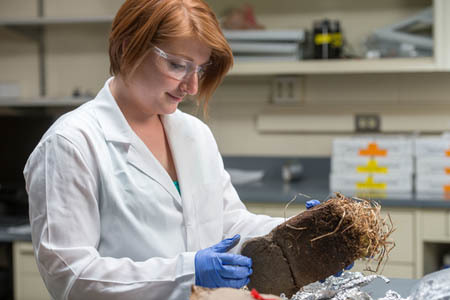
Kelsey Kremers, a graduate student in the Department of Biological Sciences, has earned a NASA Earth and Space Sciences Fellowship for her proposal, “Is arctic greening consistent with the temperature sensitivity of coupled carbon and nitrogen cycles?" The fellowship is very selective—only 64 fellowships were funded out of 391 applications this year.
Historical satellite observations have shown a strong greening trend across the arctic, and this trend is important for understanding changes in plant productivity and the carbon balance. The greening of the arctic is often attributed to increased temperature, but arctic plants are more limited by nitrogen than by temperature alone.
Kremers’ proposed research seeks to understand the greening trend by examining the links between temperature, nitrogen, and carbon. She will assimilate 20 years of arctic long term ecological research measurements into a coupled carbon and nitrogen cycling model. Kremers will work on this research under the guidance of Adrian Rocha, assistant professor of biological sciences and member of the Environmental Change Initiative.
“This work is very timely,” Kremers said. “Ecosystem changes in the arctic are occurring faster than we can understand them. This project will determine how sustainable the widespread increase in arctic plant productivity is under climate change.”
Awarded annually, NASA Earth and Space Sciences Fellowships are given to students pursing masters or doctoral degrees in Earth and space sciences or related disciplines. The mission of the fellowship program is to ensure continued training of a highly qualified workforce in disciplines needed to achieve NASA’s primary scientific goals. Those goals include studying planet Earth from space to advance scientific understanding and meet societal needs; understanding the Sun and its effects on Earth and the solar system; advancing scientific knowledge of the origin and evolution of the solar system, the potential for life elsewhere, and the hazards and resources present as humans explore space; and discovering the origin, structure, evolution, and destiny of the universe and search for Earth-like planets.
Originally published by at science.nd.edu on May 29, 2015.